The unbelievable lightness of Ana Khouri’s New York home
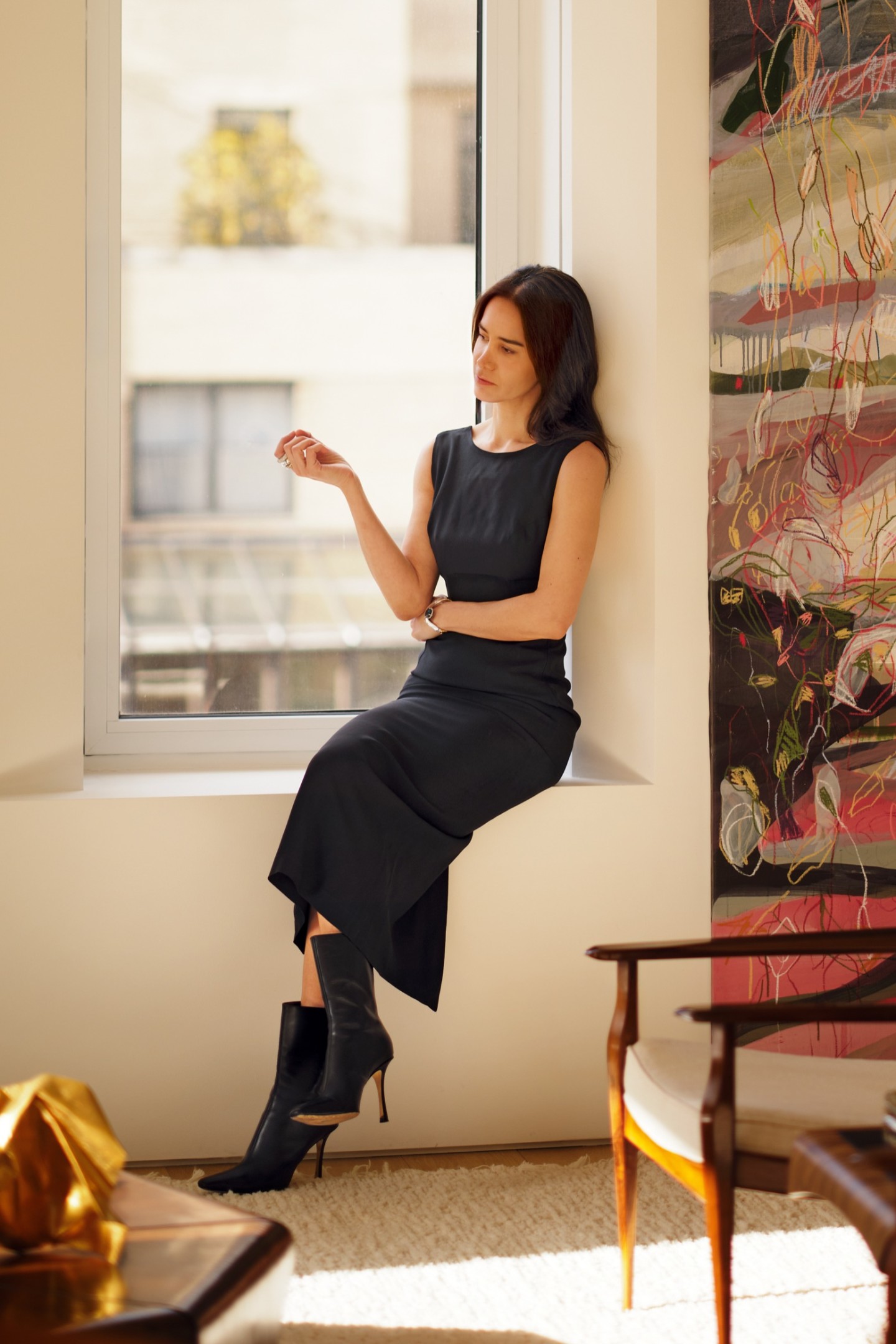
Roula Khalaf, Editor of the FT, selects her favourite stories in this weekly newsletter.
When Brazilian-born artist and jeweller Ana Khouri moved to Manhattan’s Upper East Side seven years ago, it was not entirely by choice. “I was always a downtown girl,” she says of her former West Village dwelling. “But my studio is here, and my clients, and the commute was killing me.” When she first set eyes on the prewar apartment she now calls home, it was in complete disarray. “I removed entire rooms,” she says. “It was a mess.” But the space, which is flanked by Madison Avenue and Central Park and sits above the treetops, had one thing in its favour: it was surrounded by windows. “It had a good thing going on,” she says. “It was all about the light for me.”
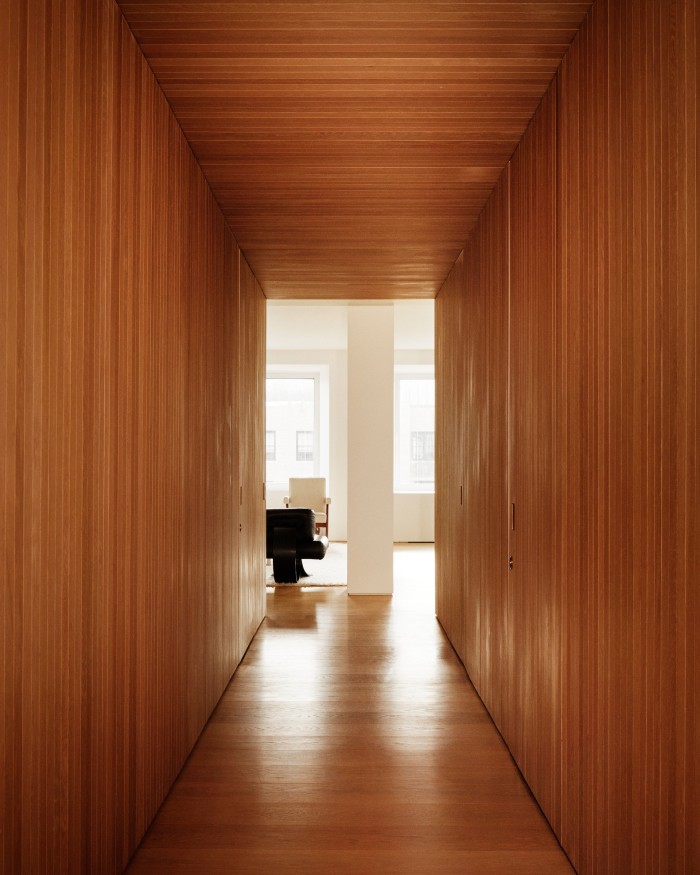
Luminosity is a consistent theme for Khouri. Her jewellery is created in such a way that light bounces off it, to illuminate the wearer (“Much of my jewellery is worn close to the eyes, to make the light play in your favour”), while every crevice of her home seeks to optimise its presence. The entryway has a window, reconstructed during the year-long renovation, set in walls that slope inwards to create a sense of infinity. “It’s very sculptural,” she says, “which is very me.” Here, a Donald Judd chair, Roy Lichtenstein artwork and Le Corbusier lamp also reside. To the left, a wooden passageway leads to a light-flooded lounge decorated with a Sarah Lucas mobile, Richard Prince piece and original midcentury furniture by Pierre Jeanneret, Jean Prouvé, Niemeyer and “the pope of Brazilian furniture” Joaquim Tenreiro.
With an appreciation for contemporary and vintage, a global outlook and nostalgia for Brazil, her home is a study in opposites. “It was very personal designing this place,” says Khouri, who has collected art and vintage furniture since her student days. “It was never about building a collection to entertain. It’s literally what I like, want to live with and what connects to me in some way.” Although she enlisted an architect-friend from Isay Weinfeld’s firm to carry out the renovation’s technical side, it was her own vision that drove the project. Says Khouri: “I didn’t want anyone to ‘set’ a house for me.”
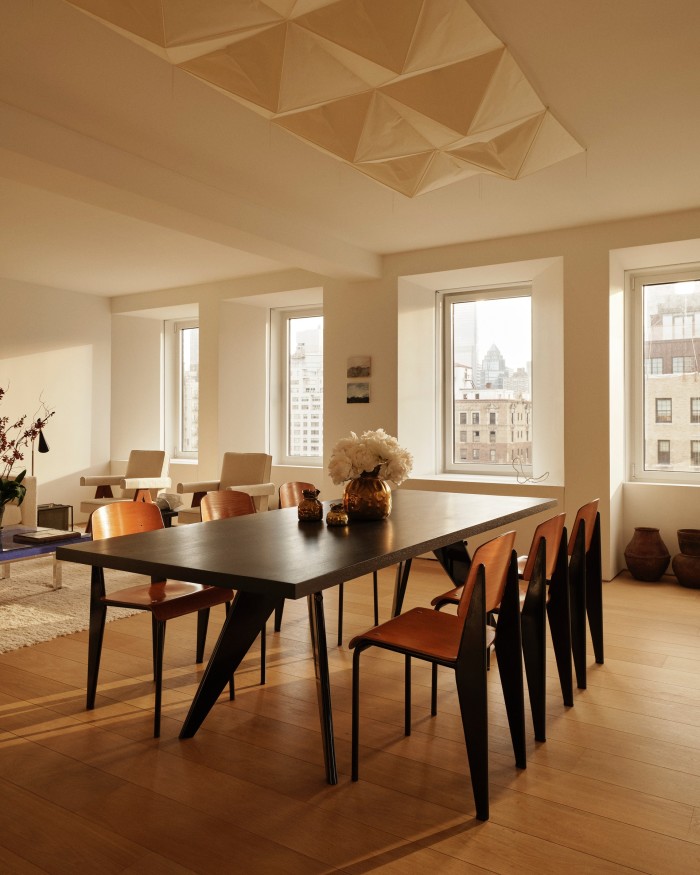
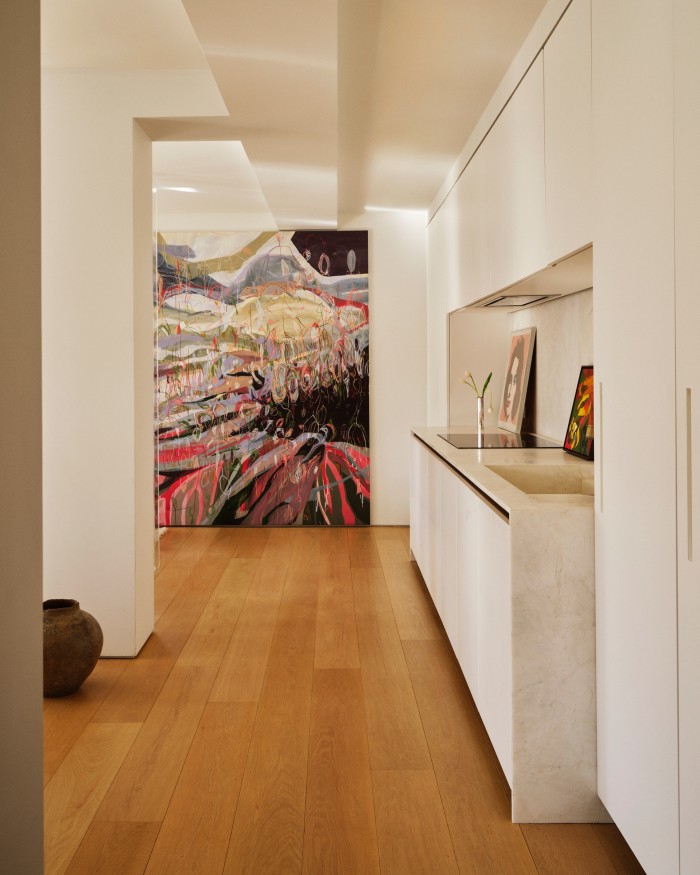
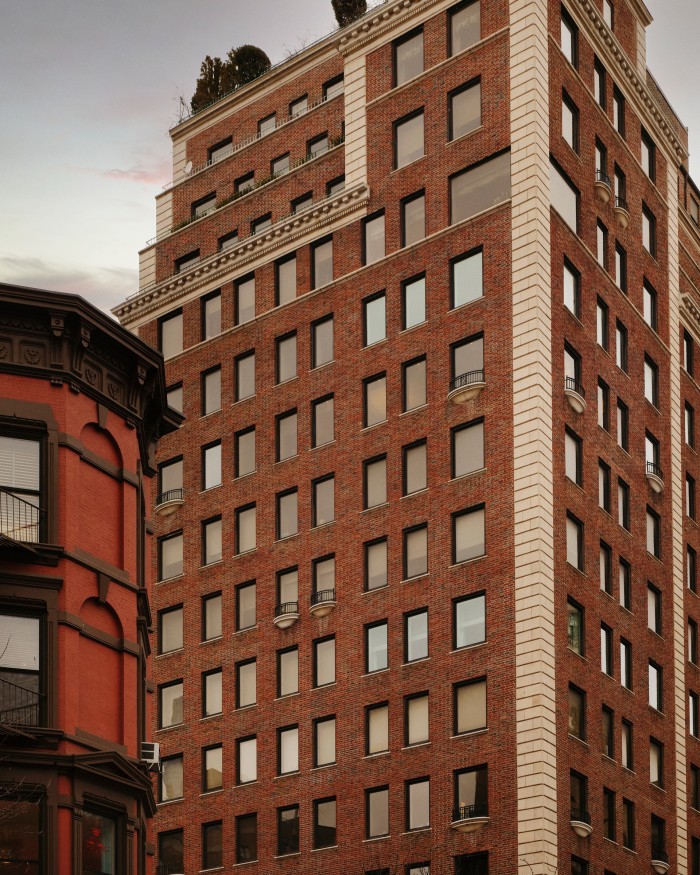
As with her work – a rosewood necklace carved out of a chest of drawers or an amorphous ear cuff with a dangling diamond – her home is anything but predictable. Push a hidden door at the edge of a graphic, wooden passageway and you’ll step inside a tiny bathroom, lined with pretty, foliage-print tiles by Brazilian artist Adriana Varejão and adorned with souvenirs from countless work trips: combs from Botswana, a vintage Parisian hand mirror and antique Brazilian medicine jars all line a copper sink. Two of her own sculptures, the starting point for every piece of jewellery, sit on a Jorge Zalszupin coffee table in the centre of an adjacent living room. The presiding theme is starkly modern, but the vintage flourishes add a warmth that brings things back to earth – or, at the very least, to Khouri’s experience of it.
Khouri was born to a pianist mother and engineer father in São Paulo in 1981 and grew up in a home next to a eucalyptus farm. Every weekend was spent frolicking in nature – digging in the earth, riding horses and swimming in the nearby lake – until she was 10 when her family decamped, first to Florida and then to New York. It wasn’t until much later, when it was time to choose an art school, that she returned to her roots. In Brazil, art studies are drawn out over five years and experimentation is encouraged. “I did everything from installation to painting and photography before majoring in sculpture,” she recalls. It was her final show there, consisting of gargantuan metal artworks worn by naked women to signify a balance of masculine and feminine, cold and warmth, that changed her career trajectory.
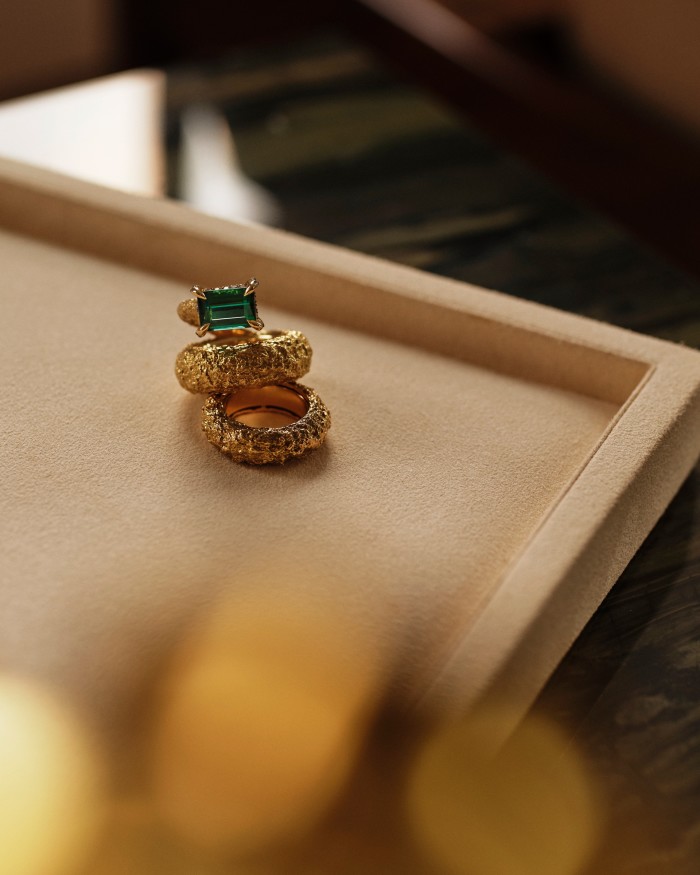
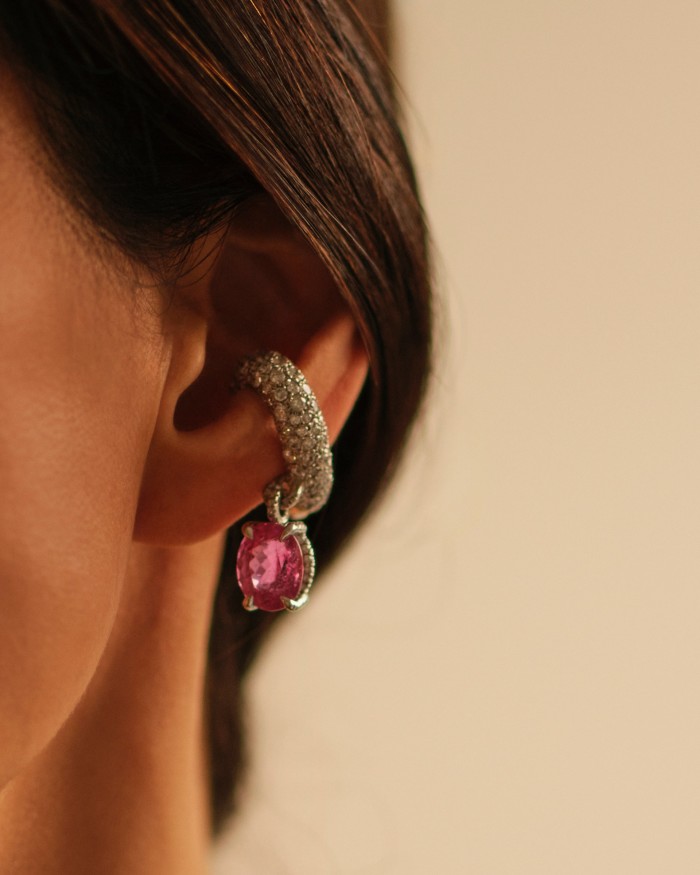
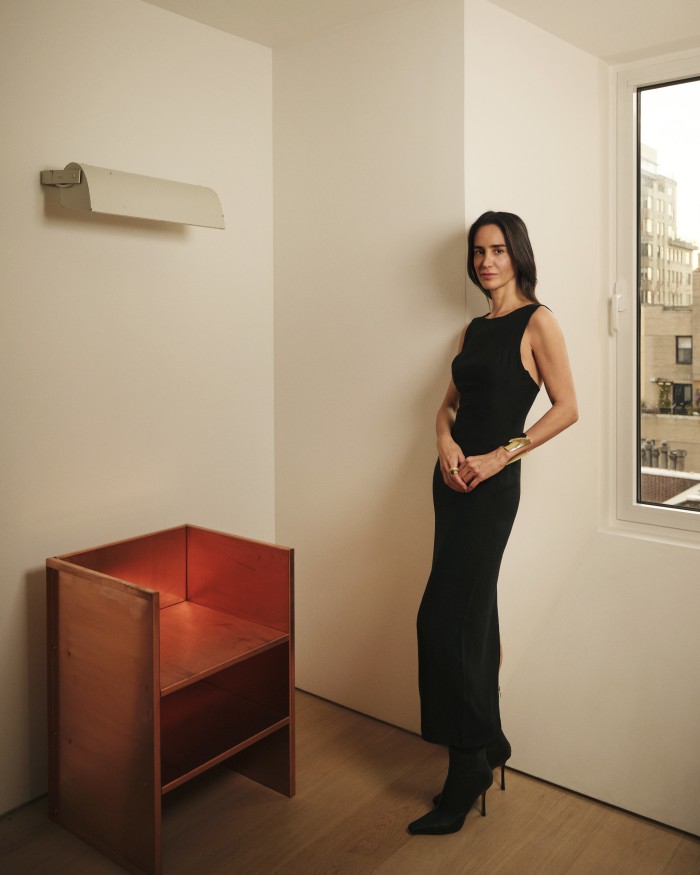
“Someone asked if I would adapt the sculptures so she could wear them,” Khouri remembers. “But I didn’t know how.” Driven by the challenge, Khouri set about finding a jeweller who could teach her. “For me, it was about empowering that woman,” she remembers. “Moulding that piece to her was about bringing out her beauty; it wasn’t about making a piece that would stand out.” Word soon spread and the unsolicited commissions began trickling in, though they were initially met with resistance. “I was raised around artists, so I had this idea that I’d be downgrading myself if I became a designer,” she recalls. “But I got over it. I eventually realised that, in order to come up with these pieces, I needed to sculpt. And I was like, yes, I’m an artist and this is how I create.”
Her process keeps a rigorous order that is slow, considered and intentionally compartmentalised. She creates art in a workspace in Brooklyn, while her jewellery is made in an atelier near her home. “Each place has a different energy,” she explains. “I like to keep things separate.”
Khouri is selective with how she chooses to present her work. She used to sell limited editions of jewellery for anywhere between $3,800 for a single emerald ear cuff to $43,985 for a diamond Mirian bracelet, through Barneys, Matches and Net-a-Porter, but it intuitively didn’t feel right long-term. “The Row has exclusive rights to the editions now, because we have similar concepts and trust each other,” she says of her symbiotic relationship with Mary-Kate and Ashley Olsen, who display her pieces like artworks in their store, rather than online. “Of course it’s for sale, but it’s much more than just a product.”
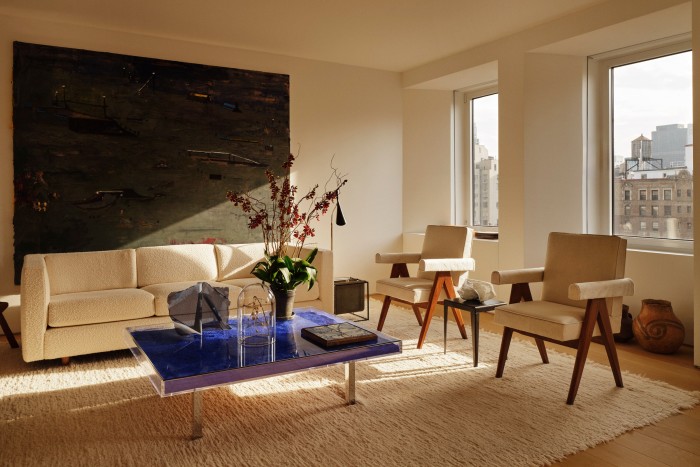
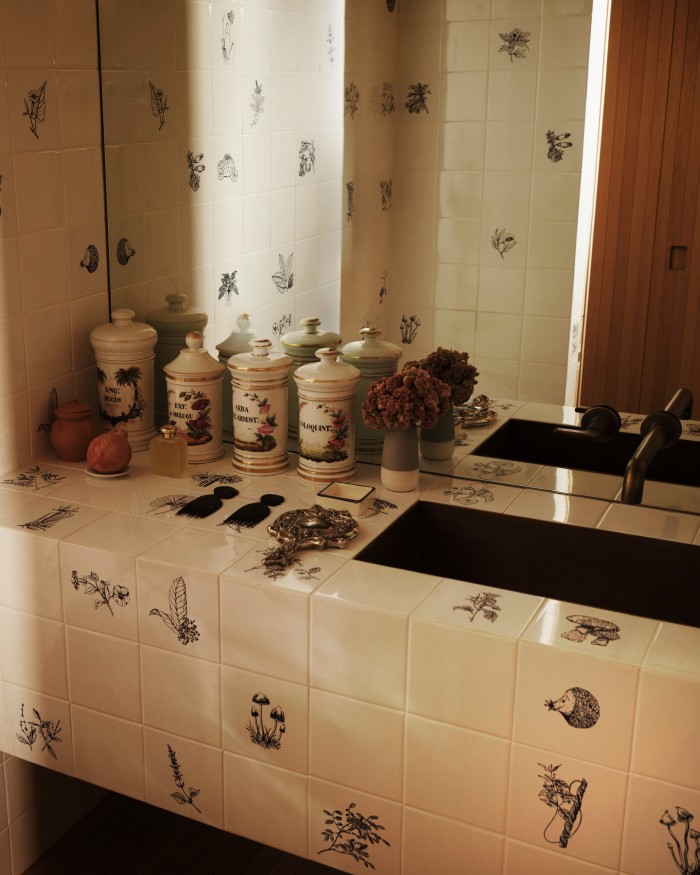
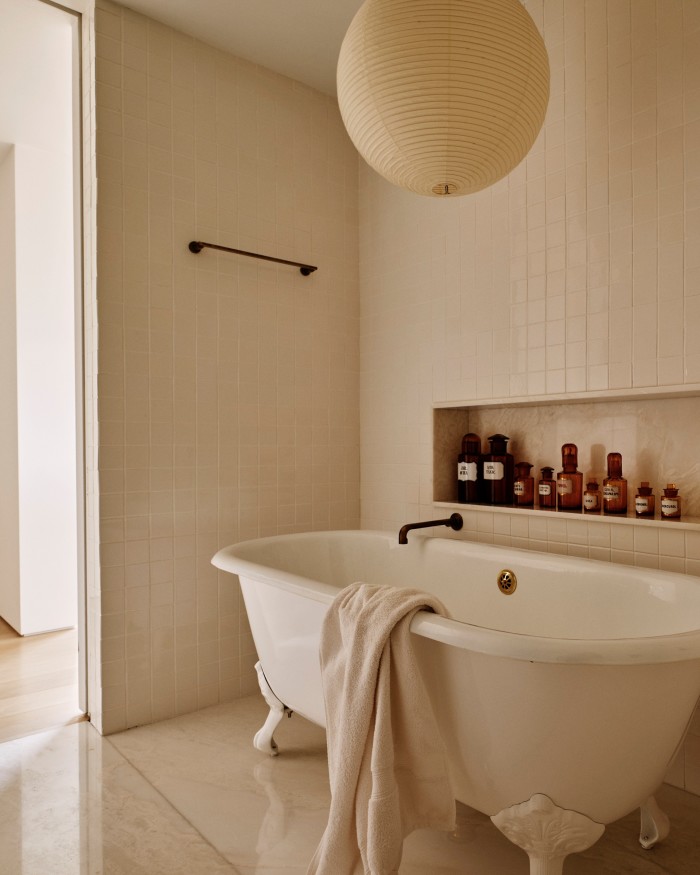
Meanwhile, Khouri has exhibited her one-off creations through Christie’s, Phillips and Sotheby’s in the past. In March, she will hold her first retrospective, at the Luisa Strina Gallery in São Paulo – her debut in her mother country. And in May she will show, for a second time, at the prestigious TEFAF art fair in New York, where past jewellers have included Christian Hemmerle, Boghossian and Otto Jakob. “It’s an incredibly selective process,” says Christophe Van de Weghe, a modern and contemporary art dealer who was formerly a TEFAF chairman, and now sits on the five-person selection committee. “Ana has this amazing energy, an incredible global following and is really a frontrunner on issues of sustainability in the art world.”
She is certainly a poster girl for that. “When I was in art school, I started thinking about [environmental] footprints,” she recalls. “I grew up on a farm, so the materials I use are important to me.” Enter Fairmined, an initiative that certifies ethically mined gold while preserving small mining communities and the environment. All of Khouri’s pieces – which can take a year to make – are crafted from 18-carat Fairmined gold, platinum and ethically and responsibly sourced gemstones. Following years of collaboration, she is now Fairmined’s sole ambassador, and mentors emerging jewellers. “I tell them, join a mine,” she implores. “When it’s ethically sourced, the price doubles, so it’s hard for established houses to suddenly charge more. Our future depends on those coming up who start with that. It’s all the same materials, it comes from the earth, but the guy who is sourcing it is either going to die or his family isn’t going to be paid. When you reach that level of knowledge, you think, ‘OK, what do I want for my line? Do I want to be the richest person in the world or do I want to do what’s right?’”
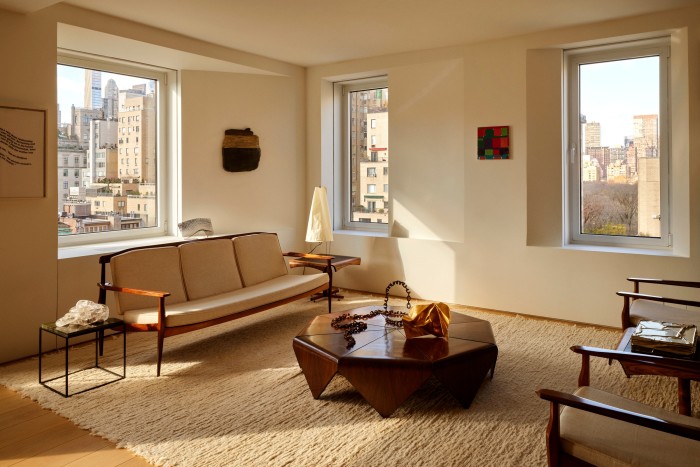
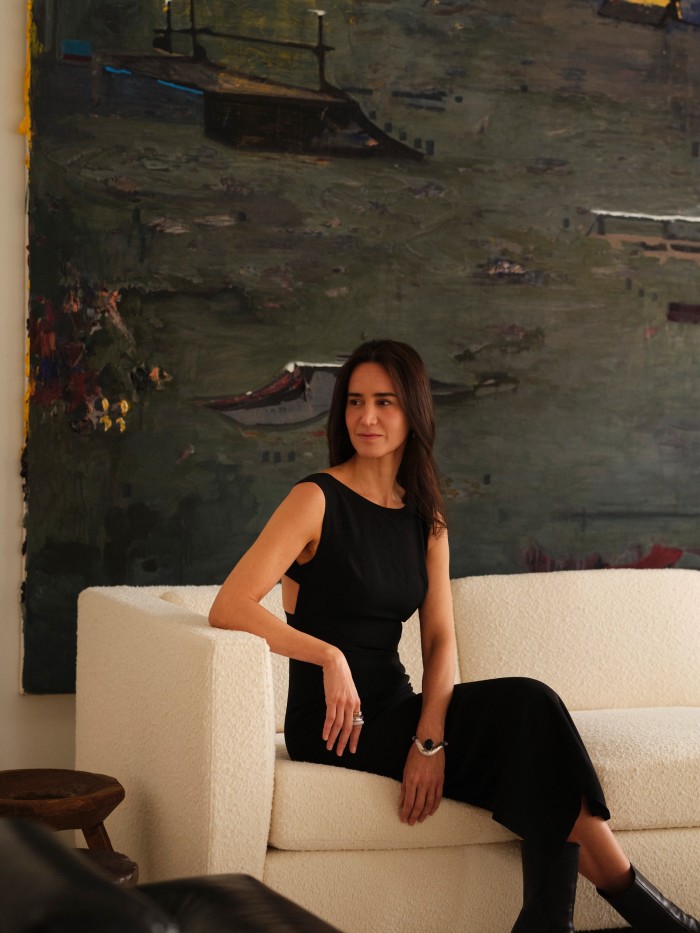
Others are heeding her call, which was outlined in a manifesto released during Frieze Art Fair Los Angeles in 2020 that lives on both Fairmined’s website and her own. “Many jewellers discovered us that way,” says Laura Galvis, head of sustainable markets for the Alliance for Responsible Mining. “Europe has traditionally set standards and driven change, but when the US joins in, it has a bigger economic impact. Now, with the Russian sanctions and as people question the benefit of recycled gold, many jewellers are reconsidering their sources. It’s so important to have different energies operating on our behalf.”
Her own work, meanwhile, surpasses trends while appealing to the cultural moment. Celebrities from Nicole Kidman and Jennifer Lawrence to Margot Robbie and Hailey Bieber have worn her trademark ear cuffs, and Khouri was nominated for the CFDA’s American Accessory Designer of the Year last November. “There is a textural story behind every piece,” says Galvis of Khouri’s appeal. “The materials speak to its origin and come from an emotional place.” Khouri herself puts it down to her jewellery reflecting the moment we’re living in: “It doesn’t date you to a specific time,” she says. “It’s relatable because it’s from your era. It moulds to you, but isn’t clingy.”
From her jewellery’s future owners to the workers in its supply chain, Khouri’s hyper-focused consideration of others is behind every business decision. “That’s just who Ana is,” says Anne-Gaëlle Van de Weghe, a close friend and the wife of TEFAF’s Christophe Van de Weghe. The duo met at Miami Art Basel nine years ago and Van de Weghe now owns numerous Ana Khouri pieces, including bracelets, ear cuffs and a stack of doughnut rings. “She’s so generous and such a good person at heart. It’s understandable that’s reflected in her work and vision.” Both personally and professionally, she is a leading light, indeed.
Comments